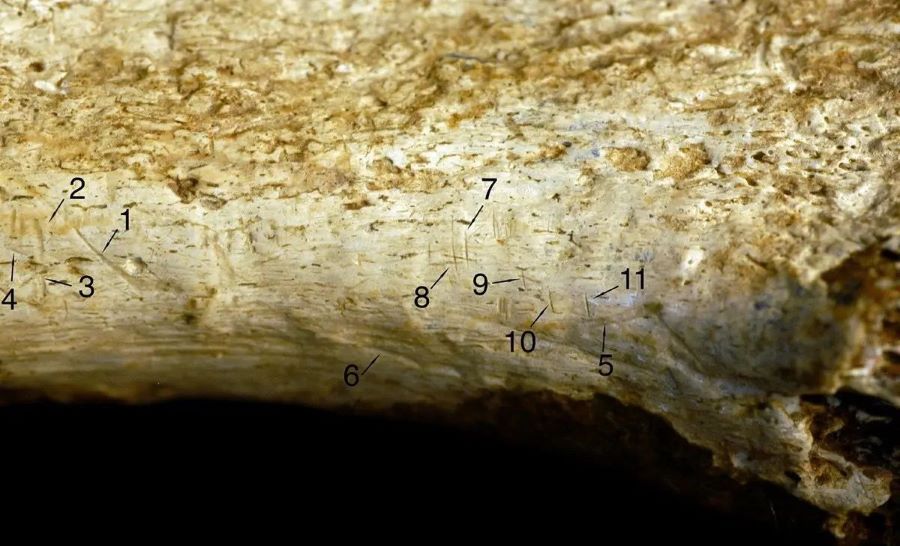Why did our ancestors eat each other 1.45 million years ago?
A hominin tibia exhibited in Kenya’s Nairobi National Museum since being discovered in the Turkana region in 1970 by famous anthropologist Mary Leakey is shedding a new light over the diet of prehistoric humans. In 2017, paleoanthropologist Briana Pobiner of the Smithsonian National Museum of Natural History took a closer look at the bone and concluded that she found the oldest-known evidence that our ancestors used to feast with human flesh.
The previously-unnoticed archaeological findings imply that 1.45 million years ago an ancient hominin cut up the bone at the knee in a style used to strip meat before eating another distant relative of Homo sapiens. And then a big feline chewed the bone, leaving teeth marks near the scars left by stone.

A tibia bone in the Nairobi National Museum exposes the cannibal habits of humans.
Credit: Smithsonian National Museum of Natural History
Researchers determined that nine of the 11 markings had come from stone tools and two bite marks seemed to come from a big cat.
According to a study on this topic, published in the magazine Nature / Scientific Reports, the researchers are not sure which human species the poor victim belonged to or whether the eater and the eaten shared the same species – because the tibia bone is not enough to draw a conclusion.
They suggested that the butchered bone may have belonged to a member of the Homo erectus or Paranthropus boisei species, though there's no consensus yet on that. There were no remains of the one who removed the meat from the bone.
Although many questions related to this case have not been answered, the authors of the study agree that our ancestors regarded each other as food when going through tough times. Cannibalism wasn’t rare among hominins but neither customary – they may have not hunted each other, but if someone died, even members of his or her tribe would not waste such free food.
Cannibalistic diet remained on our ancestors’ menu even during the later stages of human evolution, though mainly for religious or cultural purposes.
Several species of primates still eat the likes from rival tribes. Some human tribes in Africa, Latin America and Oceania have preserved the funerary rituals with human flesh consumption since the Neanderthals and modern humans first developed them 100,ooo years ago.







